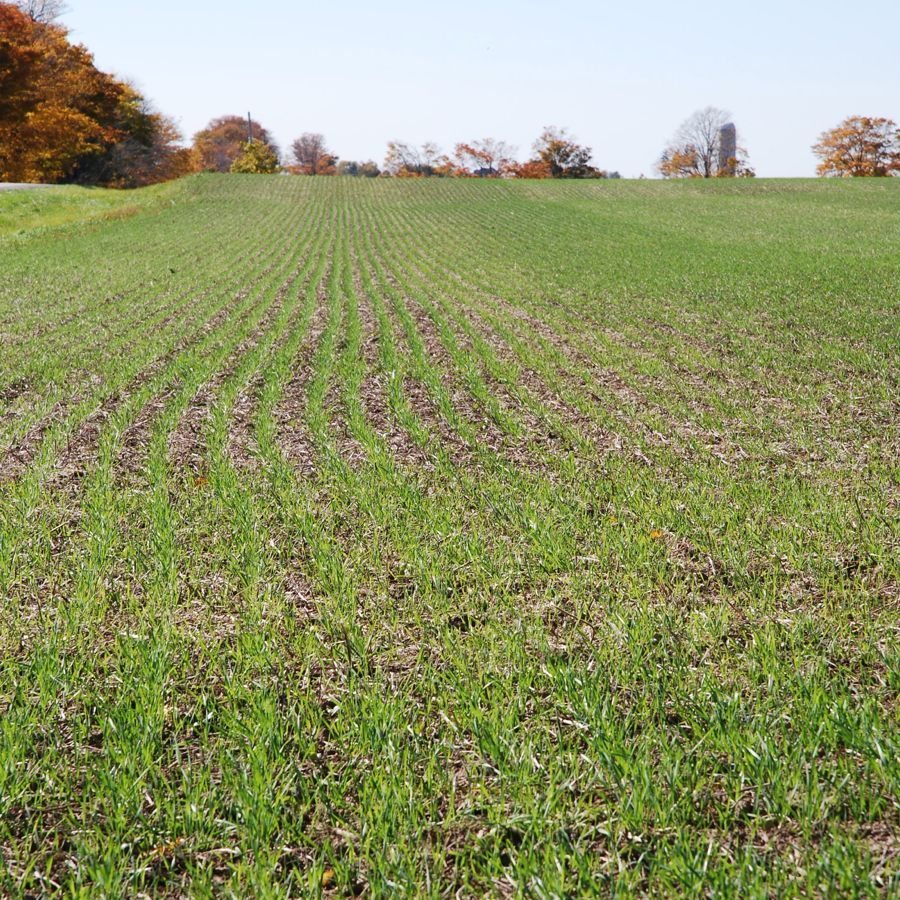For the past five growing seasons, winter wheat has taken it on the chin in terms of its status as one of the Big Three crops in Eastern Canada.
Compared to soybeans, which have seen a steady climb to the three million-acre mark in those five seasons, wheat has suffered from poor seeding conditions with two of the past five years topping a million acres and a five-year average at 77 bu./ac., according to statistics from Ontario’s agriculture ministry.
Coupled with prices that are trending lower and disease levels of fusarium head blight that are tougher to manage, wheat is poised to fall back on that “rotational crop” reputation it’s been working to overcome since the mid-1990s.
Read Also

U.S. grains: Corn, soybeans higher in technical bounce; wheat firms
Chicago | Reuters – Chicago corn futures rose modestly on Thursday on chart-based buying, firm cash markets and reminders of…
According to some cereal enthusiasts, winter wheat seeding was to see a rebound in 2015, courtesy of late-summer heat and drier-than-normal weather conditions through much of October. And visually, there seem to be more acres of winter wheat across much of southern Ontario, at least. Yet Andre Chollet, agronomist with Elite Seeds and Coop Federee, concedes that one of his toughest challenges is convincing his growers to maintain their wheat acres. Only by adding in revenues for straw (estimated at $65 per bale or $185 per acre) do earnings on wheat eclipse those for corn and soybeans. Then there’s the challenge of fusarium head blight, a disease that hit growers across Ontario hard this summer, downgrading their yields and leaving many with feed wheat.
“It’s very interesting to come up with the numbers on where the market is today, and the revenue per acre,” said Chollet, who’s based at Alexandria, Ont. “That wouldn’t include the custom work or the cost of harvesting or the value of the land — that’s just the cost of fertilizer, seed, chemicals and spraying.”
Under that microscope, and using five-year provincial averages on yield, corn revenues would fetch more than $500 per acre (156.9 bu./ac. at CBOT price of US$3.41 = $535.04). Using the same formula and a provincial average of 46 bu./ac. and $8.64 per bushel, soybeans would fetch $397.44. Even with a higher price than corn ($4.68) and a five-year average yield of 77 bu./ac., the revenue on wheat still comes out lowest, at $360.36. Only with the sale of the straw can revenues eclipse those of corn. Again, those aren’t taking cost of production factors or any quality downgrades into account.
Yet in spite of agronomic research that shows a definitive benefit from maintaining cereals in the rotation, Chollet shakes his head in frustration at the short-term pricing challenge and the increasing risk of quality losses due to disease. Those are the biggest factors in the here and now.
There’s also the drive for growers to plant longer-maturity soybeans, even if it means delaying seeding dates on winter wheat. It’s a trend that’s pushing wheat out of the rotational profile, it’s become a topic of discussion during conference presentations and breakfast meetings, and it’s become a concern for some agronomists and advisers.
“Let’s look at price, and let’s look at fusarium, and what we can do to make it attractive to growers, in spite of both of those issues,” Chollet posed. “Until we have a good answer, I think we’re beating ourselves up trying to convince them only on fertility or soil structure or long-term benefits. We can have those conversations as much as we want, but unless the dollars and the fusarium issues are out of the way, we’re spending a lot of time talking.”
— Ralph Pearce is a field editor for Country Guide at St. Marys, Ont. Follow him at @arpee_AG on Twitter.
Table: Harvested area (acres) and average yield (bu./ac.) for wheat, soybeans and corn, 2011 to 2015. Source: OMAFRA.
| Wheat. . | Soybeans. . | Corn | |
| 2011 | |||
| Harvested acres | 1,100,000 | 2,463,000 | 2,000,000 |
| Average yield | 75.0 | 47.6 | 152.0 |
| 2012 | |||
| Harvested acres | 820,000 | 2,587,000 | 2,210,000 |
| Average yield | 78.4 | 48.3 | 153.2 |
| 2013 | |||
| Harvested acres | 1,045,000 | 2,595,000 | 2,210,000 |
| Average yield | 80.1 | 45.9 | 160.5 |
| 2014 | |||
| Harvested acres | 775,000 | 3,060,000 | 1,860,000 |
| Average yield | 77.2 | 45.5 | 160.9 |
| 2015 (estimated). . | |||
| Harvested acres | 630,000 | 2,920,000 | 2,035,000 |
| Average yield | 74.5 | 42.9 | 157.9 |















